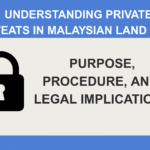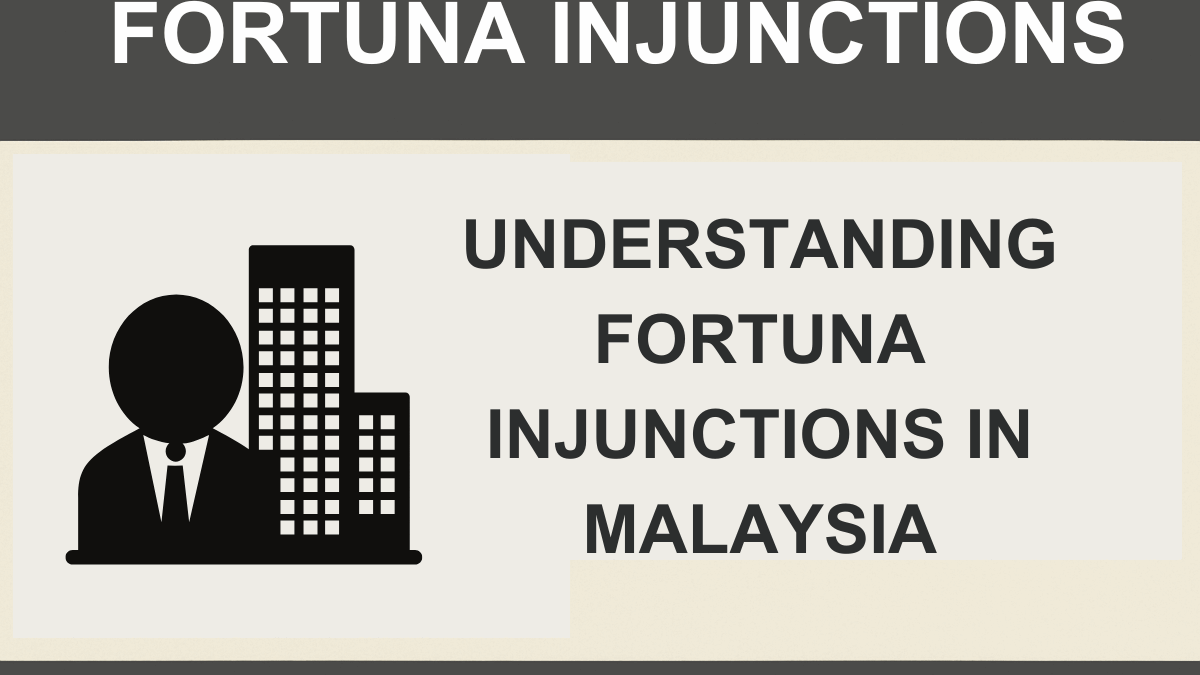
Understanding Private Caveats in Malaysian Land Law: Purpose, Procedure, and Legal Implications
May 22, 2025By: Shahrizal Mizani Abd Khamis
A Fortuna injunction serves as a vital legal remedy in Malaysia, designed to shield companies from creditors who misuse the winding-up process to pressure debt repayment. This remedy stems from the Australian case Fortuna Holdings Pty Ltd v Deputy Commissioner of Taxation [1978] VR 83, where the court first articulated the principles against using insolvency proceedings as a coercive tool. Since then, Malaysian courts have adopted and refined these principles, ensuring that insolvency laws are not weaponized against companies engaged in bona fide debt disputes.
To obtain a Fortuna injunction, the applicant company must satisfy a strict set of legal criteria. First, there must be a bona fide dispute on substantial grounds. This means the alleged debt must be genuinely contested, not merely a tactical delay, and supported by credible documentation, such as payment receipts or correspondences challenging the debt calculation. Courts in Mobikom Sdn Bhd v Inmiss Communications Sdn Bhd [2007] 3 CLJ 295 and Swissray International Sdn Bhd v V Medical Systems Sdn Bhd [2023] CLJU 1358 have underscored that a prima facie or vague dispute is insufficient. The dispute must be real and significant.
Second, the company must show that the filing of the winding-up petition would cause irreparable harm to its business. This goes beyond financial loss, the reputational damage alone may lead to loss of investor confidence, withdrawal of suppliers, and cancellation of critical contracts. This was a decisive factor in Heap Lee Chan Trading Company Sdn Bhd v Ng Chiang Chong [2024] MLJU 1538 and JR Engineering and Medical Technologies (M) Sdn Bhd v Ganesan a/l Subramaniam [2024] MLJU 798, where the courts recognized the severe consequences of a winding-up threat on a company’s operational continuity.
Third, there must be no reasonable chance of success for the petition. In Sime Darby Energy Solution Sdn Bhd v RZH Setia Jaya Sdn Bhd [2021] 9 CLJ 880, the court ruled that where the debt is admitted or undisputed, an injunction will be denied. Conversely, if the petition is based on flawed calculations, a questionable statutory demand, or if there's a pending arbitration or civil suit, courts may intervene. This principle was also applied in Setia Fontaines Sdn Bhd v Pro Tech Enterprise Sdn Bhd [2023] 12 MLJ 324, where the court restrained a winding-up petition involving a disputed payment certificate and concurrent arbitration.
Another essential factor is whether the creditor has alternative remedies. Winding-up petitions are not meant to serve as a debt recovery shortcut when arbitration, adjudication, or litigation are viable alternatives. The courts discourage creditors from bypassing dispute resolution clauses in contracts, particularly in construction or distributorship agreements where arbitration is contractually mandated.
Finally, timeliness is critical. Under Section 466(1)(a) of the Companies Act 2016, a company has 21 days to respond to a statutory demand exceeding RM50,000. Delays in seeking a Fortuna injunction may suggest acquiescence or a lack of urgency, weakening the claim. In Poney Garments Sdn Bhd v Bambika Sdn Bhd [2024] MLJU 645, the company’s failure to act within this period was a contributing factor in the dismissal of the application.
Recent cases illustrate the courts’ careful balancing of creditor rights and corporate protection. In JR Engineering, the court granted an injunction when the statutory demand coincided with unresolved shareholder litigation. Similarly, in V Medical Services M Sdn Bhd v Swissray Asia Healthcare Co Ltd [2023] 7 MLJ 155, the court respected the arbitration clause in a disputed contract and restrained a winding-up petition accordingly. These judgments signal a consistent judicial approach: winding-up should be a last resort, not a pressure tactic.
In conclusion, the Fortuna injunction remains an essential judicial tool in safeguarding the integrity of Malaysia’s corporate insolvency framework. It ensures that winding-up proceedings are not abused and are reserved only for companies in genuine financial distress.
References:
Fortuna Holdings Pty Ltd v Deputy Commissioner of Taxation [1978] VR 83
Heap Lee Chan Trading Company Sdn Bhd v Ng Chiang Chong [2024] MLJU 1538
JR Engineering and Medical Technologies (M) Sdn Bhd v Ganesan a/l Subramaniam [2024] MLJU 798
Mobikom Sdn Bhd v Inmiss Communications Sdn Bhd [2007] 3 CLJ 295
Poney Garments Sdn Bhd v Bambika Sdn Bhd [2024] MLJU 645
Section 466(1)(a) of the Companies Act 2016
Setia Fontaines Sdn Bhd v Pro Tech Enterprise Sdn Bhd [2023] 12 MLJ 324
Sime Darby Energy Solution Sdn Bhd v RZH Setia Jaya Sdn Bhd [2021] 9 CLJ 880
Swissray International Sdn Bhd v V Medical Systems Sdn Bhd [2023] CLJU 1358
V Medical Services M Sdn Bhd v Swissray Asia Healthcare Co Ltd [2023] 7 MLJ 155
Disclaimer
The information provided in this article is for general informational purposes only and does not constitute legal advice. While effort has been made to ensure the accuracy of the content at the time of publication, laws and regulations may change, and interpretations may vary.
Neither the author nor the publisher assumes any responsibility for any errors, omissions, or any outcomes related to the use of this information. You are strongly encouraged to seek professional legal advice or verify the applicable laws with a qualified legal practitioner.
By reading this article, you acknowledge and agree that the author and publisher shall not be held liable for any reliance placed on the information provided.
